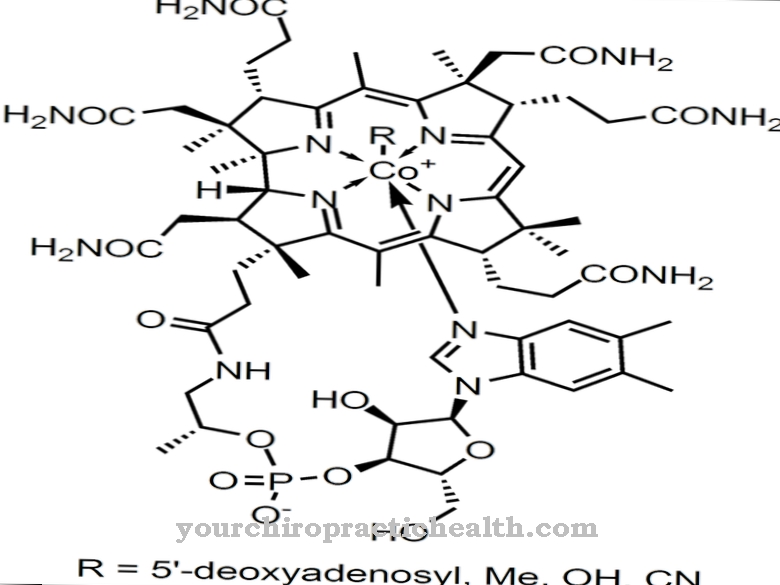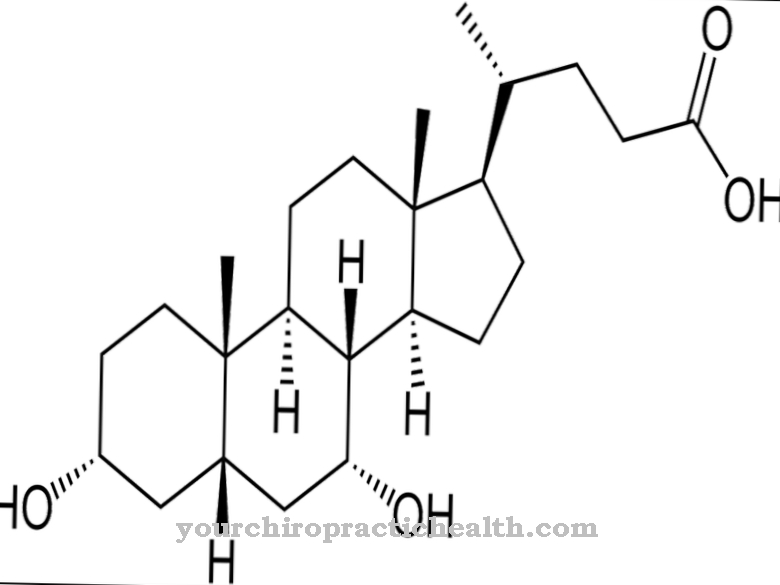A whole range of artificially produced and natural medicinal substances come under the term Glucocorticoids summarized. The glucocorticoids are also very important for the targeted treatment of diseases in the context of conventional medical services.
What are glucocorticoids?

The Glucocorticoids are not inorganic substances, but are assigned to hormones. In this context, the glucocorticoids form their own group, which is led under the umbrella term of the so-called steroid hormones. Both natural and artificially produced glucocorticoids are processed in modern pharmaceutical products.
The word glucocorticoids is made up of two parts of the word. With the glucocorticoids these mean so much "sweet things from the bark". More precisely, the glucorticoids are produced by the cortex of the adrenal gland or come to a certain extent from the liver cells.
In the human organism, the concentration of glucocorticoids is subject to a constant up and down, which is linked to the natural times of day and night. The highest amount of glucocorticoids is in the morning. The glucocorticoids drop when you sleep.
Medical application, effect & use
The Glucocorticoids achieve different effects, including an increase in the sugar level in the blood, the inhibitory effects on inflammatory processes and the influence on the mineral balance.
The glucocorticoids are used as therapeutic pillars when various diseases have been diagnosed which can best be alleviated and cured with glucocorticoids. For this reason, the glucocorticoids are mainly administered to Crohn's disease and bronchial asthma, multiple sclerosis, skin diseases such as eczema and psoriasis, rheumatoid arthritis or liver inflammation by an autoimmune defense.
Most of these diseases are based on a typical inflammatory process that can be adequately influenced with glucocorticoids. Glucocorticoids are also indispensable in palliative medicine and in some diseases of the red, white and platelet blood systems and lymph. Glucocorticoids are also prescribed to treat water retention in the brain, inflammation of the pericardium and other specific heart diseases. Glucocorticoids in combination with antibiotics are very effective against infectious diseases.
The mechanisms of action in the event of a disease are based on effects that can be achieved in relation to special proteins. If the medically controlled absorption of glucocorticoids leads to an increased concentration in the organism, the production of endogenous antibody proteins is inhibited. This helps reduce inflammatory processes that take place. In addition, glucocorticoids are used for the emergency treatment of circulatory shock.
Glucocorticoids also have an important area of application in connection with the health care of premature babies. Infants not yet fully developed are treated with glucocorticoids to support the maturation process of the respiratory organs.
Herbal, Natural & Pharmaceutical Glucocorticoids
In the treatment of diseases, different types of Glucocorticoids administered. These are prescribed in the form of natural products such as cortisone and cortisol or as synthetic drugs. The latter class includes, for example, prednisolone, rimexolone, fluocortolone and amcinonide as some of the most well-known active ingredients.
The glucocorticoids, also known as corticosteroids or derivatives of cortisone, are also used in combination with other active substances.In this regard, in addition to the betamethasone clotrimazole and the betamethasone gentamycin, the clotrimazole hydrocortisone and the fluocinonide lidocaine are also offered in pharmacies. This is only a limited selection from a wide variety of pharmaceuticals containing cortisone.
The respective product groups contain various types of application or use. These favor both internal and external use of the glucocorticoids. Classical for oral administration are glucocorticoids as tablets in varying concentrations and as injections. In contrast, the glucocorticoids are provided as ointments or creams for application to the skin. In ophthalmology, glucocorticoids are used as liquids or gels. Medicines containing glucocorticoids are also available in spray form.
Risks & side effects
Since when using the Glucocorticoids If massive interventions in the human organism occur, risks and side effects cannot be ruled out. The side effects in particular are extremely unpleasant with glucocorticoids. In addition, it cannot be ruled out that the body builds up resistance and that the body's own production of hormones from the pituitary gland can be disrupted by an increased supply of glucocorticoids.
Although the glucocorticoids are broken down and excreted naturally, those treated usually suffer from a decline in the muscles, increasing decalcification of the bones or osteoporosis, and high blood sugar. Other side effects that must be feared when taking glucocorticoids are the development of glaucoma or cataracts, a bloated face, and a decrease in skin tissue.
Psychological abnormalities such as anxiety and aggressive behavior as well as sleep disorders and an increased appetite with an accompanying increase in body weight occur quite frequently while taking it. Children who have been treated with glucocorticoids in connection with cancer therapy in order to alleviate the agonizing side effects of the cytostatics usually suffer from impaired growth.
















.jpg)










